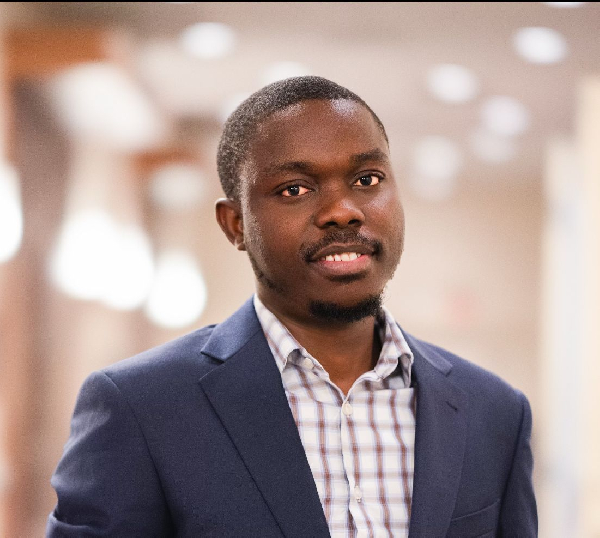A new actuarial model could help African insurers lead the next era of financial resilience, starting with Ghana.
Reinsurance rarely makes the headlines, but it plays a quiet, stabilizing role behind the scenes such as helping insurers pay claims after disasters, supporting public health schemes, and safeguarding national assets.
In Ghana, where insurance penetration remains under 2% of GDP and financial shocks like pandemics and floods regularly test the limits of local capacity, rethinking how insurers share risk is not just technical; it’s urgent.
In a new study, actuarial scientist Dr. Ernest Forson Aboagye presents a new model that reimagines how insurers determine the balance between retaining risk and transferring it through reinsurance. His solution is built for the complexity of emerging markets, where data can be sparse, losses are volatile, and every premium cedi counts.
Rethinking Risk Transfer in the Ghanaian Context
Traditionally, reinsurance modeling in academia and regulation has favored stop-loss (SL) contracts, a structure where insurers pass aggregate losses above a threshold to reinsurers. While this works well in controlled simulations, it often fails in real-world settings like Ghana’s, where inflation, exchange rate shocks, and climate volatility make loss forecasting difficult.
Dr. Aboagye’s model shifts toward excess-of-loss (EoL) contracts, which are sparsely used in practice, compared to SL contracts, but lacked a robust theoretical foundation. His contribution is a statistically rigorous, nonparametric approach to estimating the optimal “retention limit”, i.e., how much risk the insurer should keep before triggering reinsurance.
The model allows insurers to: use actual local claims data rather than imported assumptions; align with global capital adequacy regulations like Value-at-Risk (VaR) and Expected Shortfall (ES); and adjust retention dynamically based on market conditions or contract design
Why EoL Is More Viable in Ghana and West Africa
In West African markets like Ghana’s, EoL contracts offer critical advantages over SL structures. First, they are more marketable to reinsurers, as they are based on individual claim limits rather than hard-to-estimate cumulative losses. This makes pricing more transparent and reduces uncertainty.
Second, premium costs are generally lower, as EoL does not require exhaustive aggregation of claims across a full policy period — a process that is difficult in markets where claims reporting and data infrastructure remain fragmented.
Moreover, in Ghana’s context, inconsistent claims timelines and delays in loss development often render SL assumptions unreliable. EoL, by contrast, allows for event-based protection as reinsurers can step in after a single large loss, even if other claims are pending or under investigation. This is crucial for insurers covering catastrophe, motor, or health risks, where shocks are frequent but hard to tally in real time.
Finally, the regulatory shift toward risk-based supervision favors models that can stress-test individual risk layers: something EoL structures accommodate naturally. All of these factors make EoL a more resilient, cost-effective, and regulation-friendly contract type for the region.
Why This Matters Post-COVID
The COVID-19 pandemic exposed weaknesses in Ghana’s insurance ecosystem, especially for health and SME risk, where liquidity constraints and coverage gaps became acute. Although the industry recorded GH¢4.2 billion in gross written premiums in 2020, representing about 21% year-on-year growth according to the National Insurance Commission , growth slowed compared to earlier years, and pressures on capital reserves increased.
In response, Ghana’s NIC has accelerated its transition toward risk-based supervision, in line with global standards like Solvency II. Dr. Aboagye’s framework supports this shift by providing actuaries and regulators with a tool that is analytically sound, locally adaptable, and aligned with solvency reforms.
Who Benefits? Real-World Use Cases
This isn’t just theory. The model has practical implications across sectors:
• Agricultural Insurance: For insurers covering maize or cocoa farmers in the northern and other regions, the model supports rainfall-linked risk pooling and more accurate catastrophe pricing.
• Energy and Infrastructure: Ghana’s investments in renewables and oil infrastructure require reinsurance contracts tailored to project-phase risk, something this method enables.
• Microinsurance and Health: Products under Ghana’s NHIS or private health insurers need backstops for pandemic-scale claims. The model helps insurers simulate extreme events and set fairer terms with reinsurers.
• Property and Urban Flood Risk: In cities like Accra and Kumasi, insurers are increasingly exposed to climate-driven property damage. The model supports event-based coverage, allowing firms to design trigger thresholds for localized flooding or fire incidents, especially useful where urban planning gaps and drainage failures elevate loss unpredictability.
Ghana is home to strong reinsurers like Ghana Re and WAICA Re, and newer players such as ZEP-RE (PTA Re) and ARC Ltd are increasing their African footprint. For them, adopting flexible and data-informed treaty structures is not just prudent, but also a source of competitive edge. This reinsurance model provides the theoretical foundation for reinsurers seeking to price risk more precisely in emerging economies.
A Call for Ownership and Vision for Resilience
Crucially, this is not a “black box” algorithm. “It’s implementable using standard actuarial tools and open-source statistical software,” Dr. Aboagye says. “The goal is to put the power of modern risk design into the hands of African professionals.” This includes Ghanaian universities, where actuarial science programs are growing, and insurance companies seeking to train local talent in pricing and reinsurance analytics.
Rather than replicating imported models that assume complete data and perfect market stability, Dr. Aboagye argues for a context-aware reinsurance architecture. “Ghana has its own risk story,” he says. “Our models should reflect that.”
With partnerships between regulators, reinsurers, and academic researchers, Ghana could emerge as a leader in homegrown financial resilience strategies, not just reacting to disaster but proactively designing around it.
How Virtual Reality is enhancing business and customer experience
